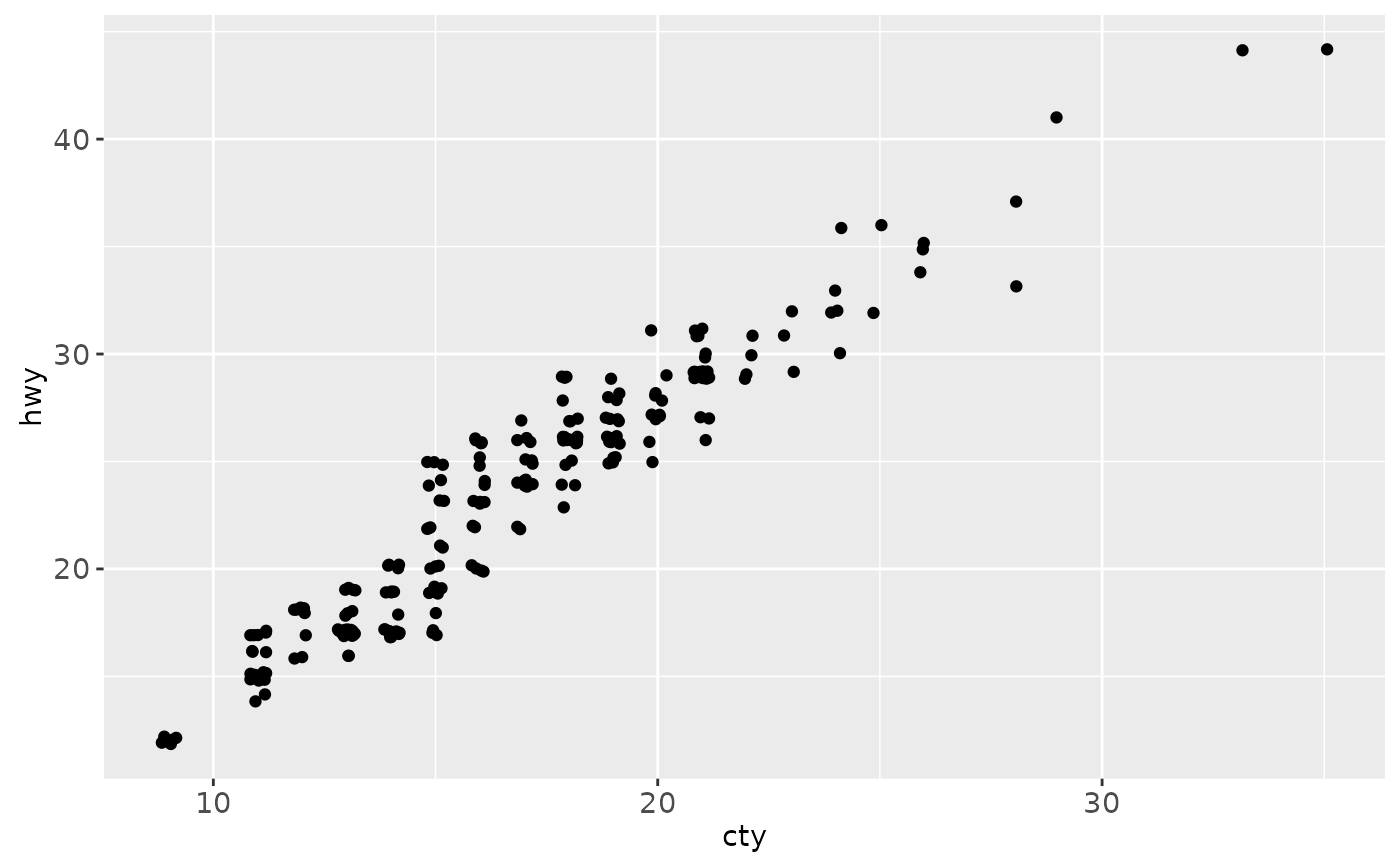The jitter geom is a convenient default for geom_point with position = 'jitter'. It's a useful way of handling overplotting caused by discreteness in smaller datasets.
Usage
geom_jitter(
mapping = NULL,
data = NULL,
stat = "identity",
position = "jitter",
...,
width = NULL,
height = NULL,
na.rm = FALSE,
show.legend = NA,
inherit.aes = TRUE
)Arguments
- mapping
Set of aesthetic mappings created by
aesoraes_. If specified andinherit.aes = TRUE(the default), it is combined with the default mapping at the top level of the plot. You must supplymappingif there is no plot mapping.- data
The data to be displayed in this layer. There are three options:
If
NULL, the default, the data is inherited from the plot data as specified in the call toggplot.A
data.frame, or other object, will override the plot data. All objects will be fortified to produce a data frame. Seefortifyfor which variables will be created.A
functionwill be called with a single argument, the plot data. The return value must be adata.frame., and will be used as the layer data.- stat
The statistical transformation to use on the data for this layer, as a string.
- position
Position adjustment, either as a string, or the result of a call to a position adjustment function.
- ...
other arguments passed on to
layer. These are often aesthetics, used to set an aesthetic to a fixed value, likecolor = "red"orsize = 3. They may also be parameters to the paired geom/stat.- width, height
Amount of vertical and horizontal jitter. The jitter is added in both positive and negative directions, so the total spread is twice the value specified here.
If omitted, defaults to 40% of the resolution of the data: this means the jitter values will occupy 80% of the implied bins. Categorical data is aligned on the integers, so a width or height of 0.5 will spread the data so it's not possible to see the distinction between the categories.
- na.rm
If
FALSE(the default), removes missing values with a warning. IfTRUEsilently removes missing values.- show.legend
logical. Should this layer be included in the legends?
NA, the default, includes if any aesthetics are mapped.FALSEnever includes, andTRUEalways includes.- inherit.aes
If
FALSE, overrides the default aesthetics, rather than combining with them. This is most useful for helper functions that define both data and aesthetics and shouldn't inherit behaviour from the default plot specification, e.g.borders.
Aesthetics
geom_point understands the following aesthetics (required aesthetics are in bold):
x
y
alpha
colour
fill
shape
size
stroke
See also
geom_point for regular, unjittered points.
Examples
p <- ggplot(mpg, aes(cyl, hwy))
p + geom_point()
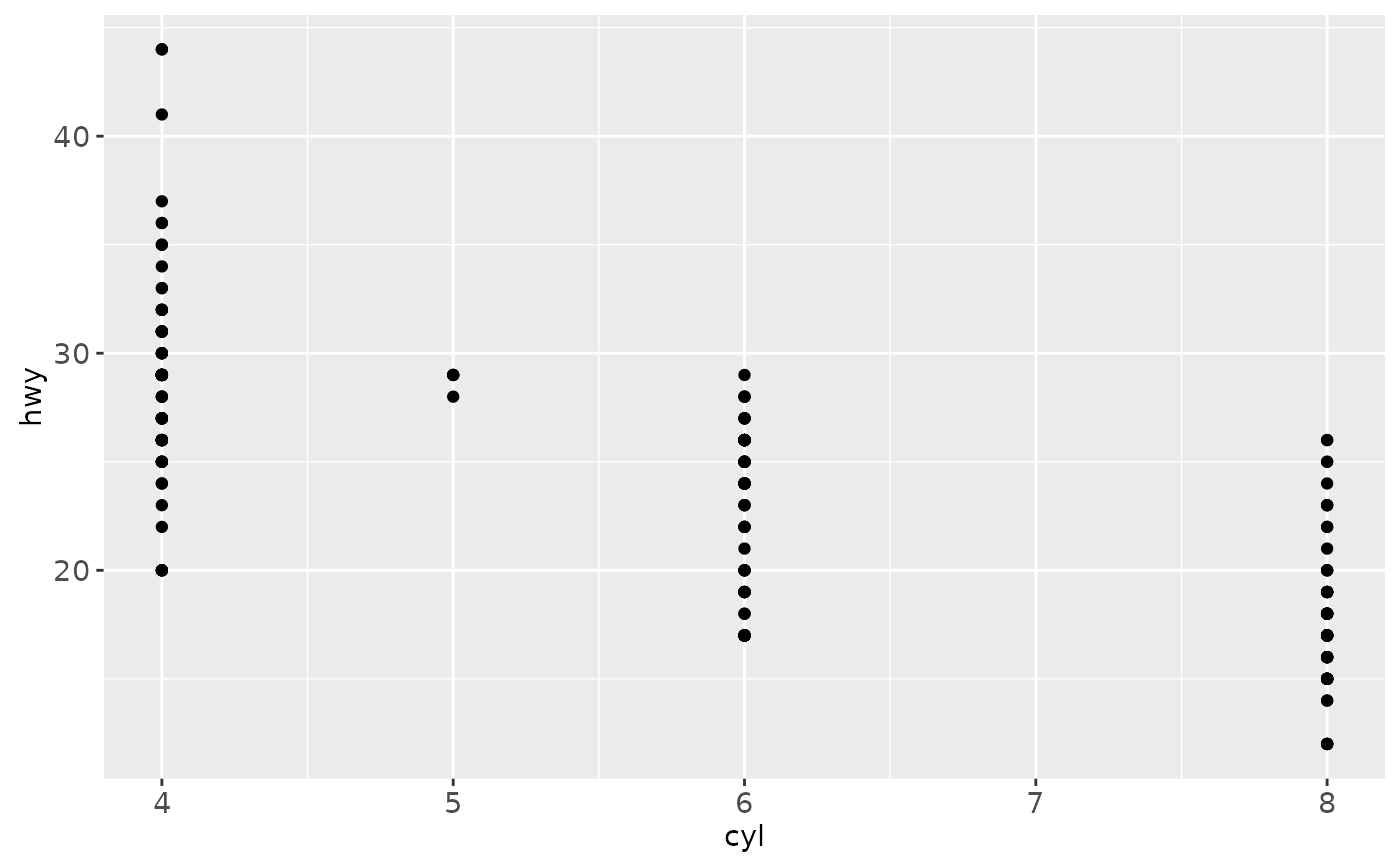 p + geom_jitter()
p + geom_jitter()
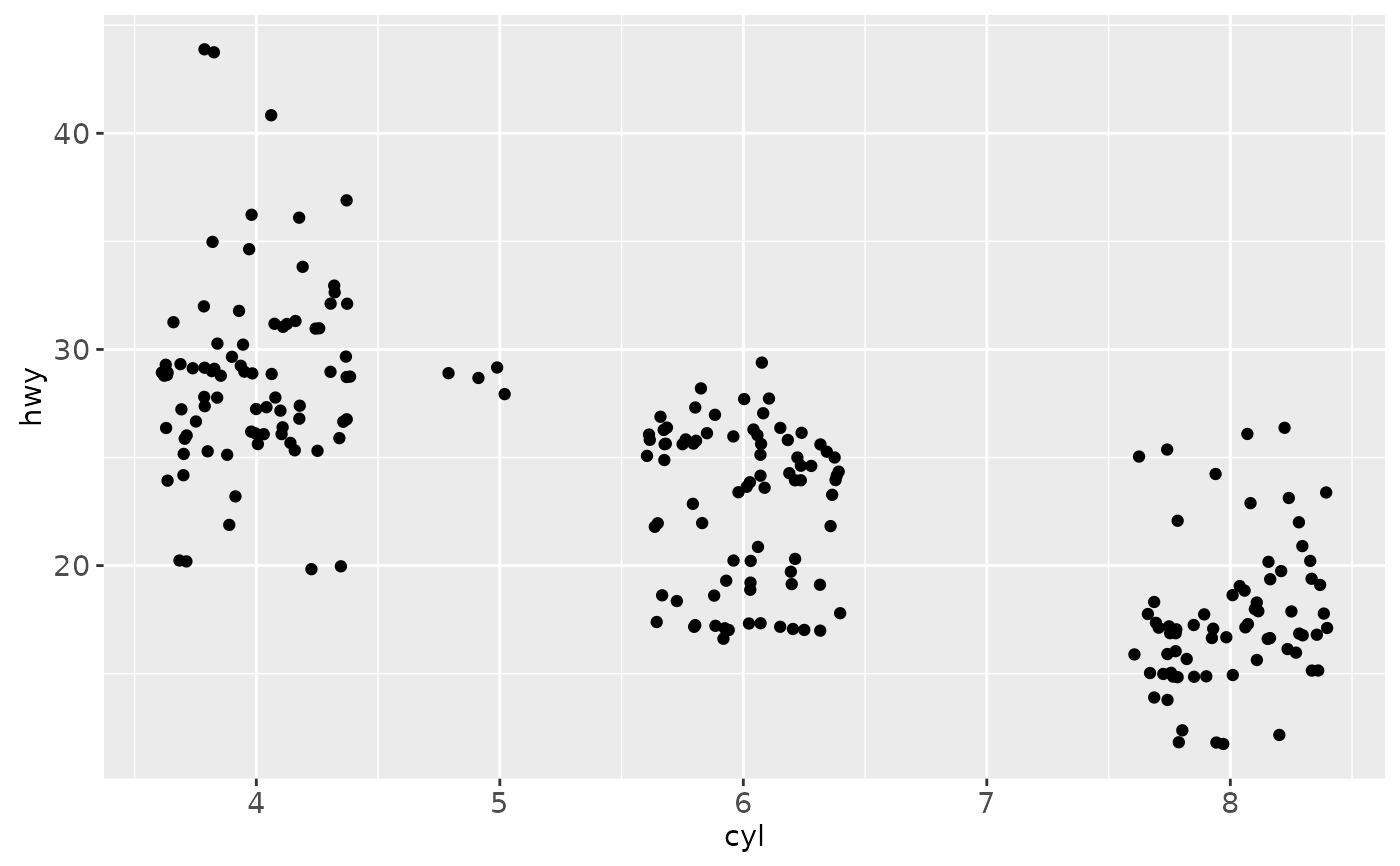 # Add aesthetic mappings
p + geom_jitter(aes(colour = class))
# Add aesthetic mappings
p + geom_jitter(aes(colour = class))
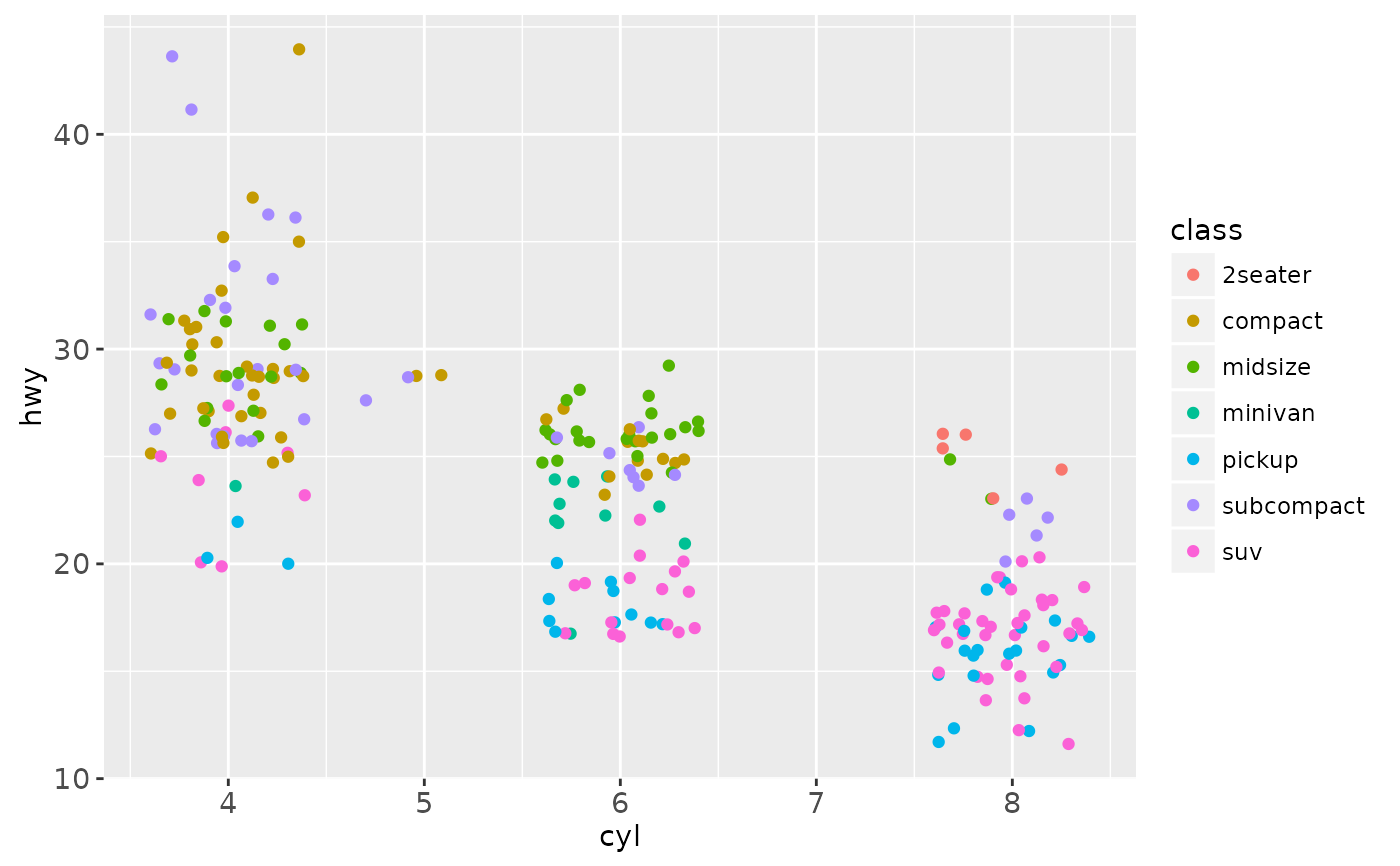 # Use smaller width/height to emphasise categories
ggplot(mpg, aes(cyl, hwy)) + geom_jitter()
# Use smaller width/height to emphasise categories
ggplot(mpg, aes(cyl, hwy)) + geom_jitter()
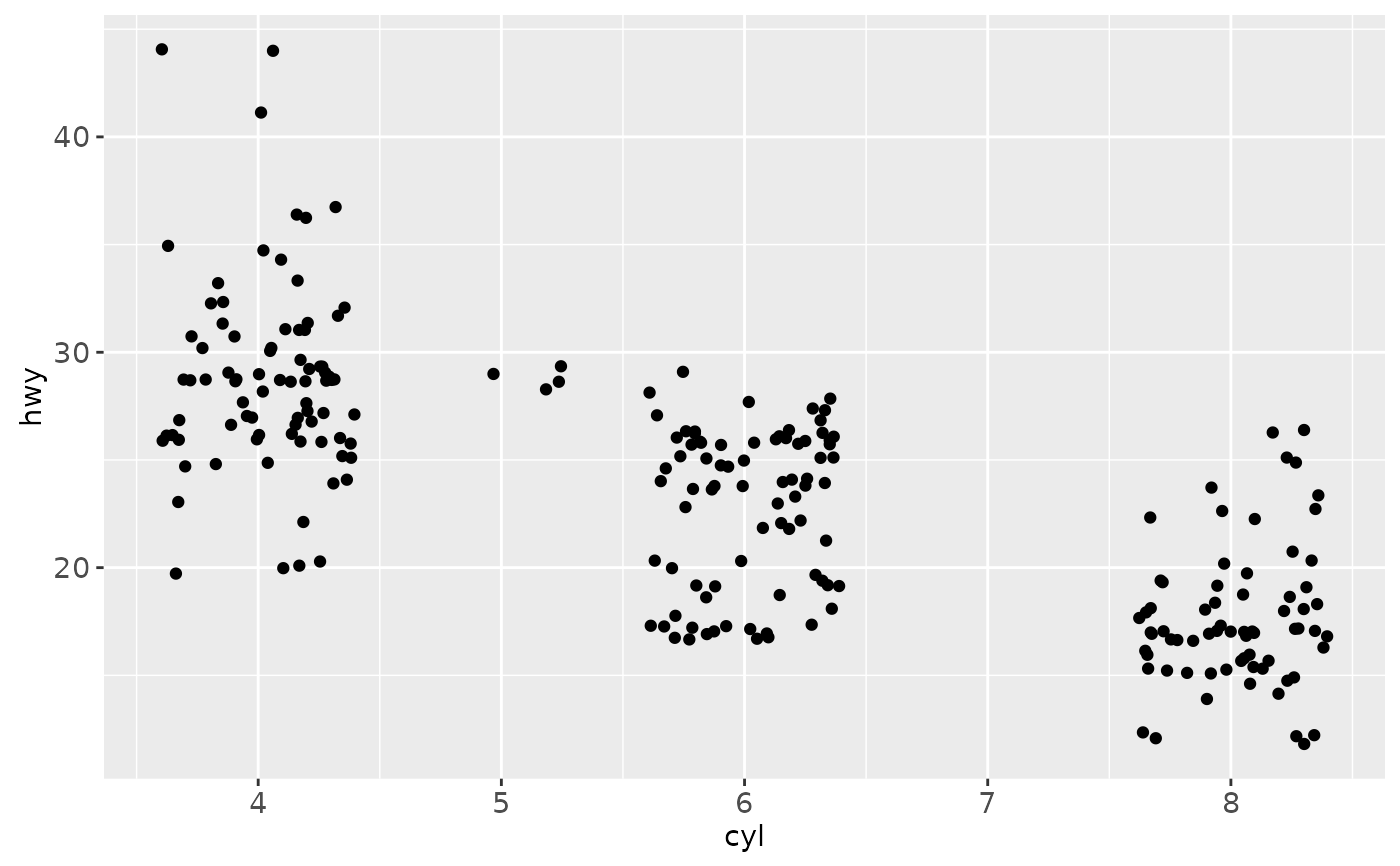 ggplot(mpg, aes(cyl, hwy)) + geom_jitter(width = 0.25)
ggplot(mpg, aes(cyl, hwy)) + geom_jitter(width = 0.25)
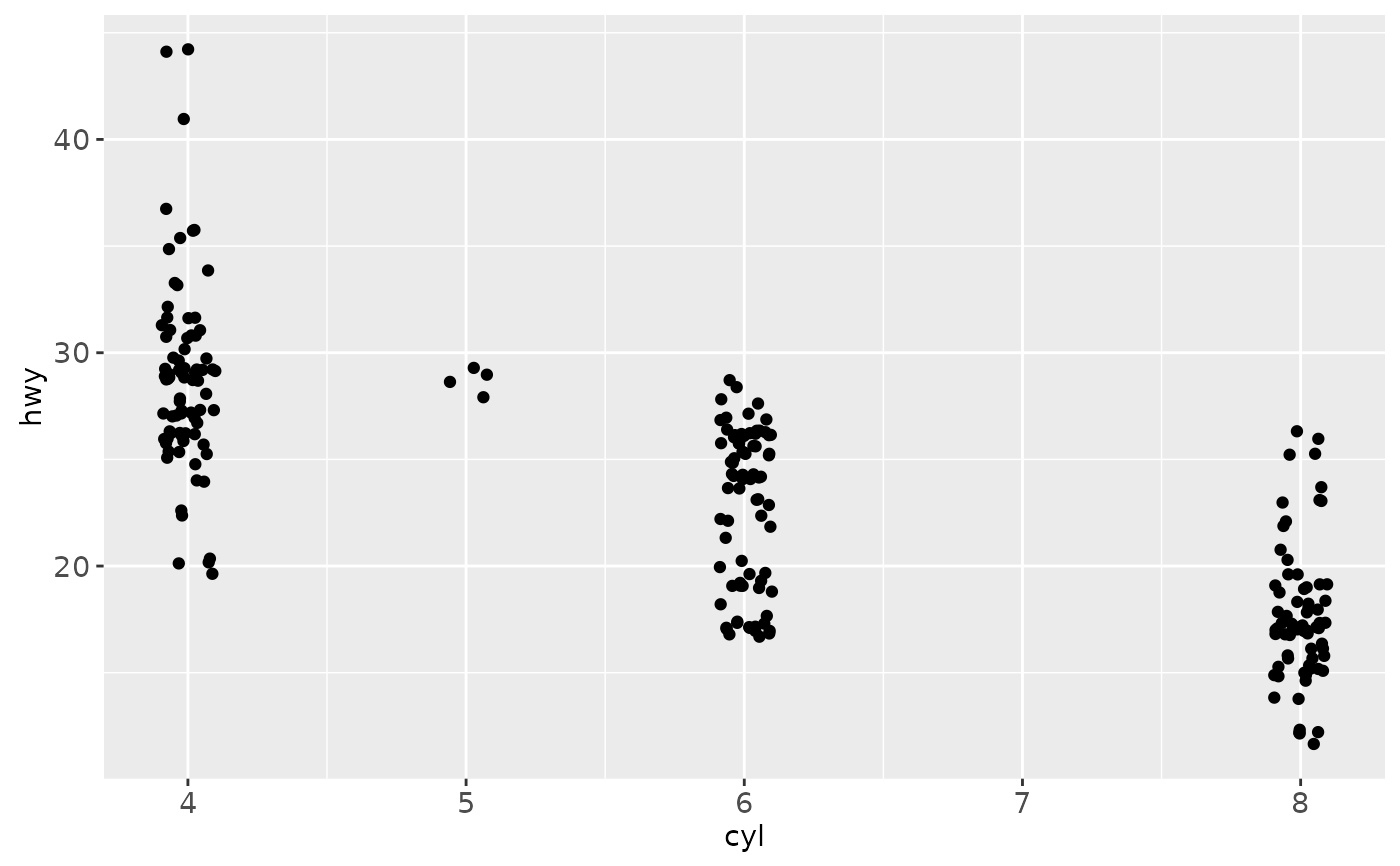 # Use larger width/height to completely smooth away discreteness
ggplot(mpg, aes(cty, hwy)) + geom_jitter()
# Use larger width/height to completely smooth away discreteness
ggplot(mpg, aes(cty, hwy)) + geom_jitter()
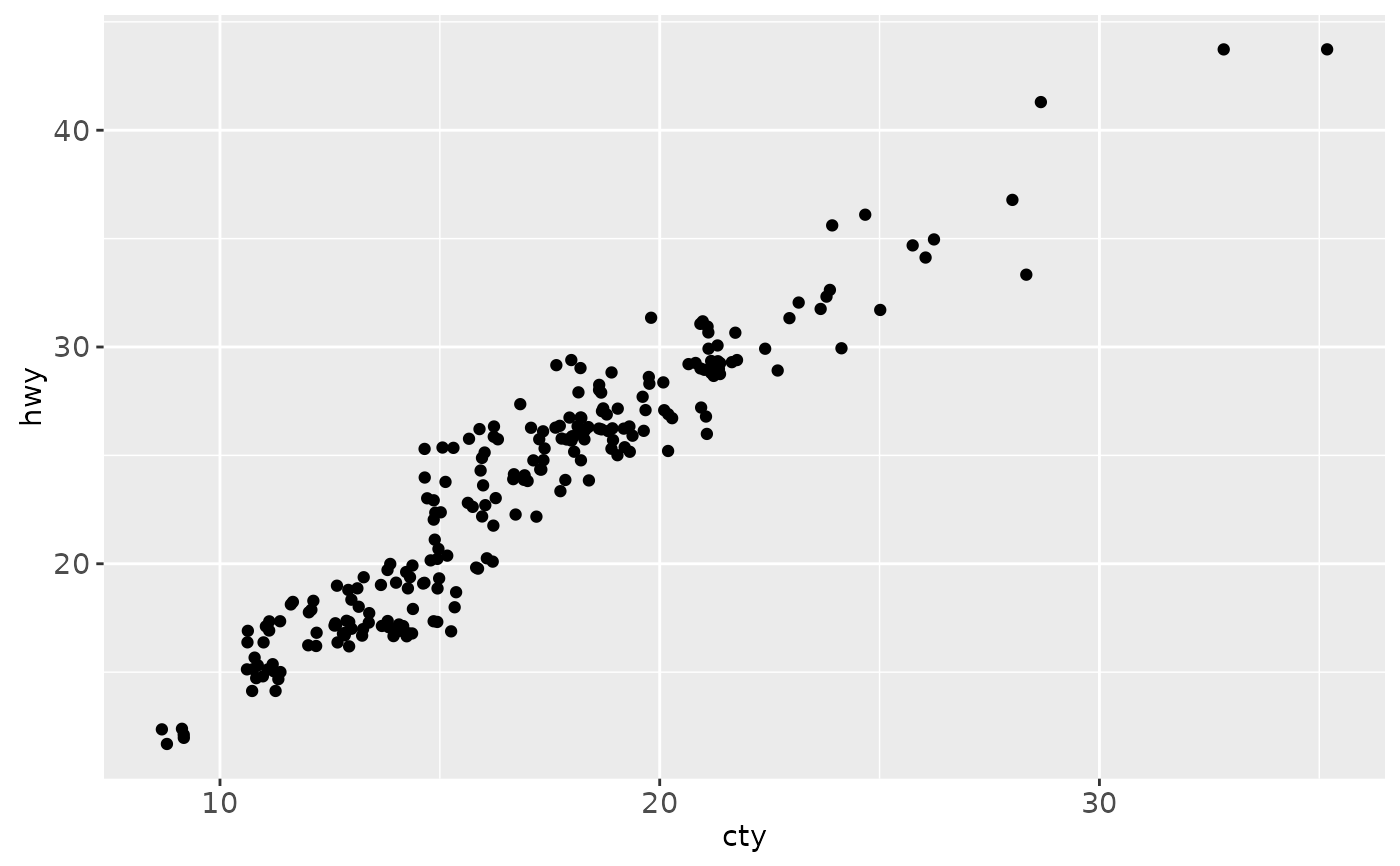 ggplot(mpg, aes(cty, hwy)) + geom_jitter(width = 0.5, height = 0.5)
ggplot(mpg, aes(cty, hwy)) + geom_jitter(width = 0.5, height = 0.5)
